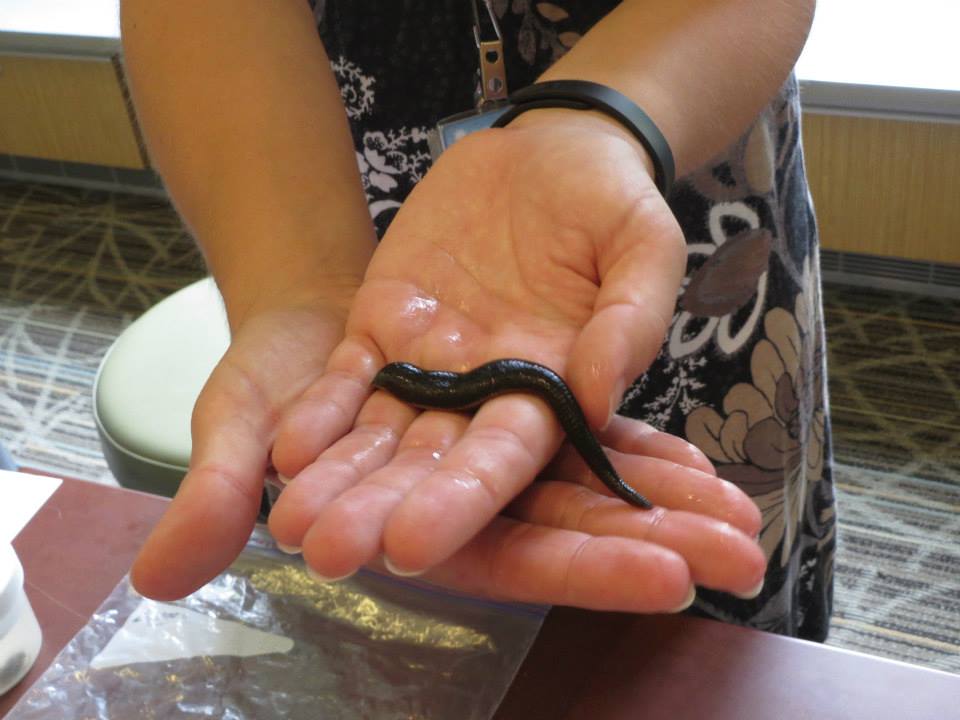A new species of blood-sucking leech, which has three jaws and over 200 teeth, was discovered this week less than a one-hour drive away from the Smithsonian’s Museum of Natural History.

The new species, named Macrobdella mimicus, was first identified from specimens collected in Southern Maryland. Scientists from the Smithsonian eventually determined that this species occupies a range that stretches throughout the Piedmont region of the eastern U.S. between the Appalachian Mountains and the Atlantic coast.
WATCH: Smithsonian National Zoo pandas are clearly enjoying the winter weather

The team of scientists that discovered the leech is based out of the museum and is led by the museum’s curator of parasitic worms, Anna Phillips. The species was introduced to the world in the Aug. 15th issue of the Journal of Parasitology.
“We found a new species of medicinal leech less than 50 miles from the National Museum of Natural History — one of the world’s largest libraries of biodiversity,” Phillips said. “A discovery like this makes clear just how much diversity is out there remaining to be discovered and documented, even right under scientists’ noses.”

Get daily National news
Leeches are parasitic worms that feed off the blood of their hosts. Physicians in the 16th to 17th centuries would use leeches to cure headaches, fevers and other conditions by ridding the body of bad blood, according to the release from the Smithsonian. Leeches that feed on humans are known as medicinal leeches.
According to reporting from Popular Science and Healthline, leeches are still used in holistic medicine to treat a number of ailments. Popular Science reports that the primary use of leeches in modern medicine is limited to microsurgeons who reattach body parts such as fingers, toes, ears and lips.
Leeches were cleared for use as a medical treatment by the FDA in 2004 because of their usefulness in skin grafts and reattachment surgery.
WATCH: U.S. significantly weakens Endangered Species Act

Macrobdella mimicas has three muscular jaws and each one is lined with between 56 and 59 teeth — totalling approximately 200 teeth in total.
Phillips said in an interview with NBC that this is a leech that will “happily” feed on humans.
“But for the most part, they’re probably feeding on amphibians or fish, probably something more abundant in their habitat,” she said.
While Philips and her colleagues have been studying medicinal leeches in North America for years, the species wasn’t discovered until after her return from a 2015 expedition with specimens she thought solely belonged to a similar species called M. decora.
However, DNA sequencing soon revealed a closely-related, yet different specimen altogether.
“Then we sequenced (their DNA), and they all came out more closely related to the leeches we had found in Maryland than to anything else known to science,” Phillips said in an interview with Science Daily.
After retrieving dozens of North American leeches stored in the Smithsonian’s parasite collection, she says she “started finding these things everywhere.”
The discovery marks the first new species of leech to be found in more than 40 years. There are more than 700 species of leeches in the world.








Comments